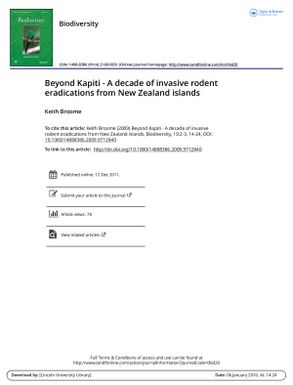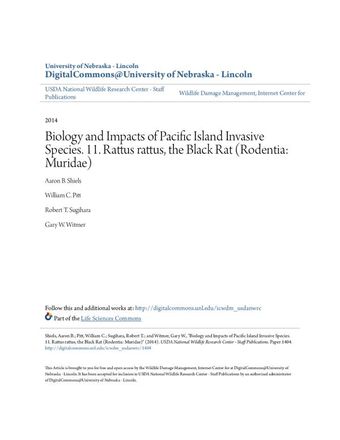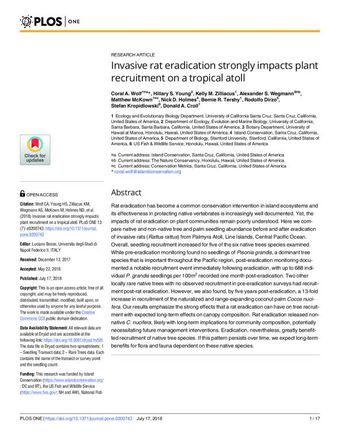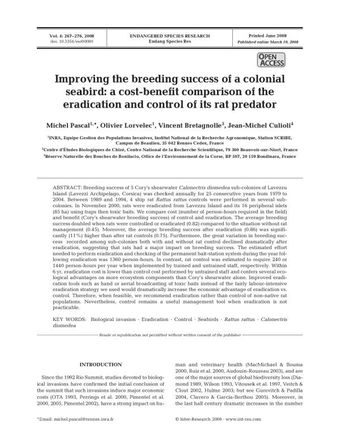Beyond Kapiti - A decade of invasive rodent eradications from New Zealand islands.
- Description:
- New Zealand, an archipelago of more than 2000 islands, has a terrestrial fauna especially depauperate in native land mammals. Kiore (Rattus exulans) was the first of four rodent species introduced by people. A project to eradicate invasive rats from Kapiti Island in 1996, represented a turning point in the technology, complexity and scale at which managers of natural heritage on New Zealand islands could operate. This paper includes case studies of some significant projects targeting rodents, sometimes with other introduced mammals, undertaken in the 12 years following Kapiti. Details of the methods, costs, results and outcomes are provided for Kapiti, Whenua Hou, Tuhua, Campbell, Raoul, Hauturu, Taukihepa, and Pomona islands, collectively representing a total of over 23,000 ha of habitat cleared of introduced mammals. Research and trials undertaken in the Kapiti project provided the basis for future environmental risk assessments, allowing other projects to focus on knowledge gaps. New trends in invasive species eradication in New Zealand include more challenging multi-species eradication projects, some of which are undertaken by self- funded community groups. To summarise the lessons of the New Zealand experience: a programmatic approach is recommended which will fit each eradication within a context or framework of goals for those islands; address biosecurity issues at the outset; build capability to attempt the most challenging and rewarding projects; facilitate investment in monitoring and manage expectations of stakeholders to ensure their ongoing support. Success breeds success but is never guaranteed.
- Collections:
- Secretariat of the Pacific Regional Environment Programme (SPREP)
- Publisher:
- Department of Conservation (DOC)
- Content partner:
- Secretariat of the Pacific Regional Environment Programme (SPREP)
- Availability:
- Not specified
-
Copyright status: All rights reservedFind out more about what you are able to do with this itemThis item is all rights reserved, with means you'll have to get permission from Secretariat of the Pacific Regional Environment Programme (SPREP) before using it. For more information, please see our use and reuse page.What can I do with this item?Non-infringing useNZ copyright law does not prevent every use of a copyright work, and this item may be hosted by an international institute or organisation. You should consider what you can and cannot do with a copyright work.No sharingYou may not copy and/or share this item with others without further permission. This includes posting it on your blog, using it in a presentation, or any other public use.No modifyingYou are not allowed to adapt or remix this item into any other works.No commercial useYou may not use this item commercially.
Related items
Welcome and warm Pasifik greetings
The information on this site has been gathered from our content partners.
The names, terms, and labels that we present on the site may contain images or voices of deceased persons and may also reflect the bias, norms, and perspective of the period of time in which they were created. We accept that these may not be appropriate today.
If you have any concerns or questions about an item, please contact us.



